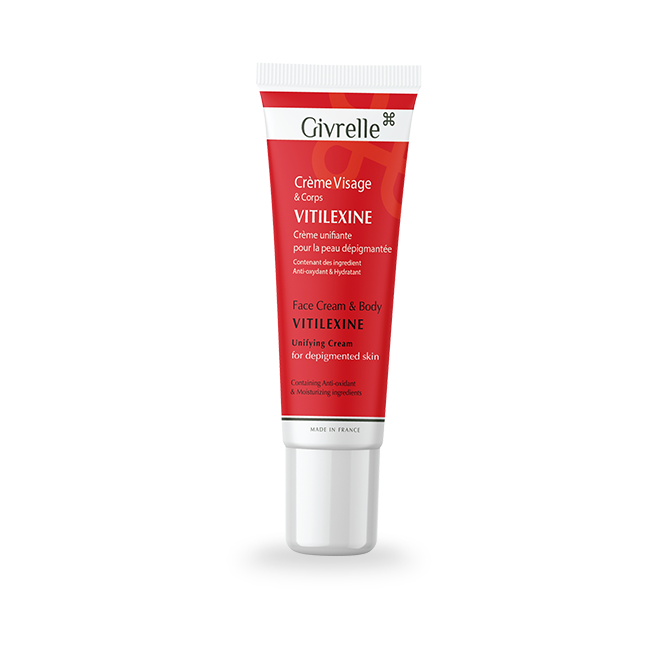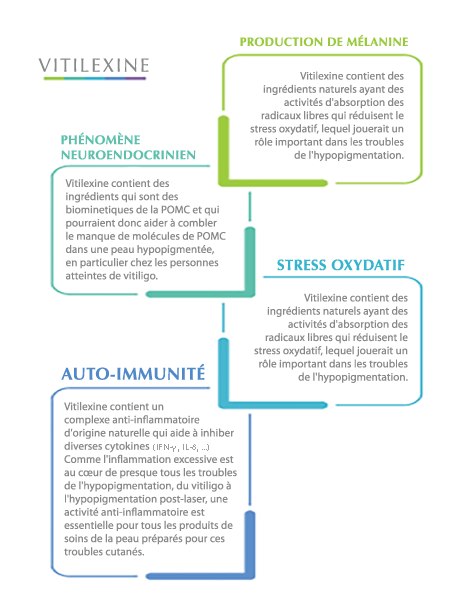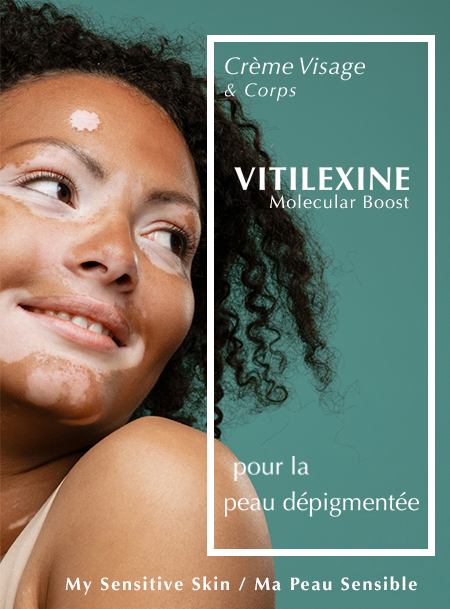Unifying Effect
Enhances skin pigmentation Reduces the appearance of skin erythema and soothes sun-ravaged skin . Calms & soothes irritated skin .

Same as every other skin type, hypopigmented skin also needs a specific kind of skin care. Vitilexine tries to present this specific kind of skin care in form of a dermocosmetic product combined with ingredients that help patients recover their natural pigmentation..
With a team of medical professionals at Lusiné laboratories, in the past 20 years we have tried to develop an expertise in pigmentation disorders..
Our story began in the 2000s with preparation of magistral formulas next to the medical practice of the president of our company, and evolved slowly with several changes during the years, into an effective topical dermocosmetic cream with a possibility of an industrial production for hypopigmentation disorders. This path took more than a decade of effort in the lab and the clinic to evolve into an accessible cream for everyone but now that we look back it was definitely worth the wait!.
Today at Lusiné laboratories we are proud to be known as one of the most uptodate teams in hypopigmentation research, and present the trade mark Vitilexine formula for helping many patients with vitiligo and other hypopigmentation disorders to combine with their other treatments prescribed by their dermatologist.

 melanin production
melanin productionVitilexine contains an MC1-R agonist that stimulated the production of melanin on remaining but less active melanocytes in hypo pigmented skin tissue
 Oxidative stress
Oxidative stress Vitilexine contains natural ingredients with free radicals absorbent activities that reduces oxidative stress, which is believed to play an important role in hypopigmentation disorders
 Neuroendocrine Phenomenon
Neuroendocrine Phenomenon Vitilexine contains ingredients that are biomimetics of POMC so they could help with the missing POMC molecules in a hypopigmented skin, specifically among individual with vitiligo
 autoimmunity
autoimmunityVitilexine contains an anti-inflammatory complex from a natural source, that helps with inhibiting various cytokines (IFN-γ , IL-8, ...). As excessive inflammation is at the core of almost all hypopigmentation disorders from vitiligo to post-laser hypopigmentation, an anti-inflammatory activity is essential for all skin care products prepared for these skin disorders.



Enhances skin pigmentation Reduces the appearance of skin erythema and soothes sun-ravaged skin . Calms & soothes irritated skin .

seals skin barrier & boosts hydration Reinforcement of the skin barrier

Helps protect against UV-induced DNA damage Free radical scavenger.prevention from radiation damage

